Happy, merry Chuseok, everyone!
It seems a strange coincidence that this year's Chuseok holiday, a time of thanksgiving and a celebration of the bountiful harvest, comes right after the 10-year anniversary of 9/11. Yesterday, many of us remembered the tragic events of a day that changed the world, but today, those of us in Korea have a chance to reflect upon all the blessings we have been given... loving family, friends, health, freedom, and life. And truly, I have so much to be grateful for.
So with a thankful heart and with my eyes looking forward, I wish everyone a happy, healthy, compassion-filled Chuseok! I hope everyone got to enjoy loads of delicious Korean food- I know I certainly did:
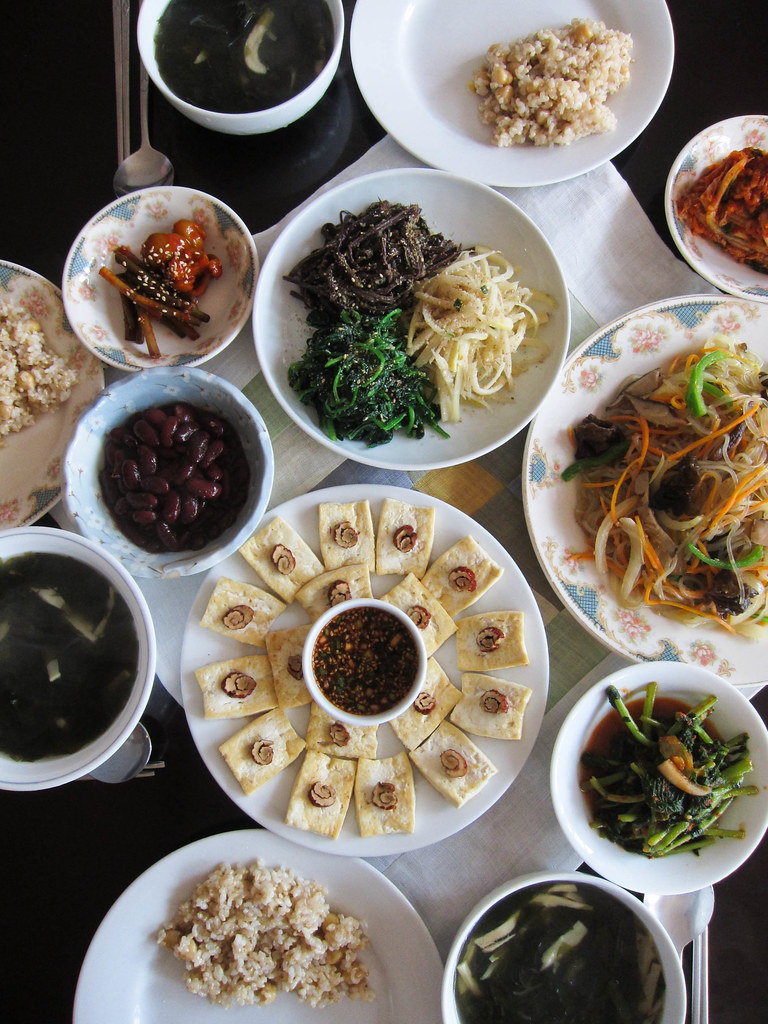
Today we had an absolutely grand Chuseok lunch feast. My mom did most of the cooking, while I helped wherever I could, chopping veggies, stirring things, and trying to keep up in writing down recipes and taking photos of the cooking process. In the end, we had an impressive traditional Korean, all-vegan spread. We kind of out-did ourselves, if I may say so myself.

Japchae noodles. recipe here.
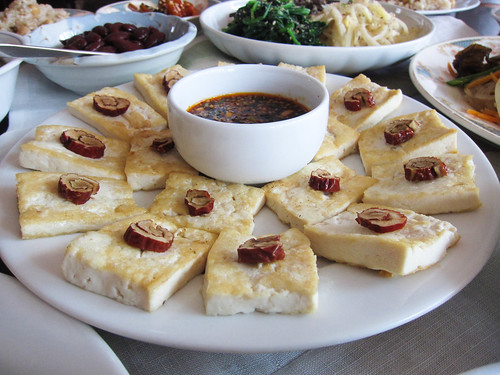
Pan-fried tofu with jujube spirals, and a soysauce-sesame seed dipping sauce. I'll share the recipe for this in my next post! :)
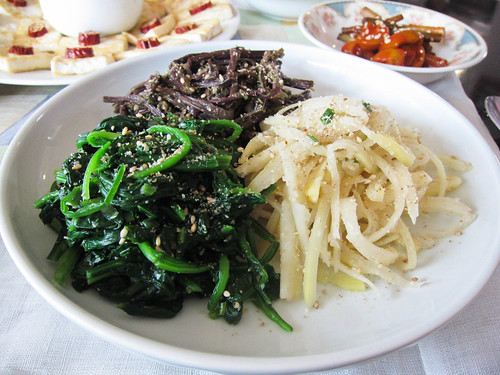
Tricolor veggie side dishes.
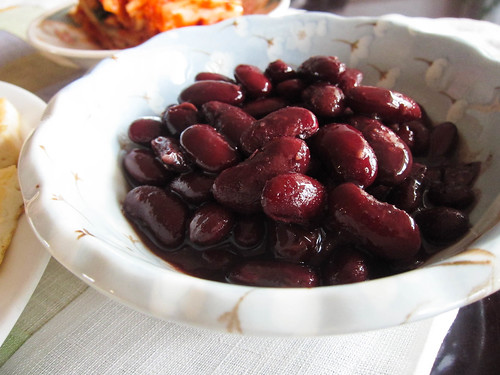
Sweet & salty saucy kidney beans. This is one of my favorite banchans right now- it's so addicting!
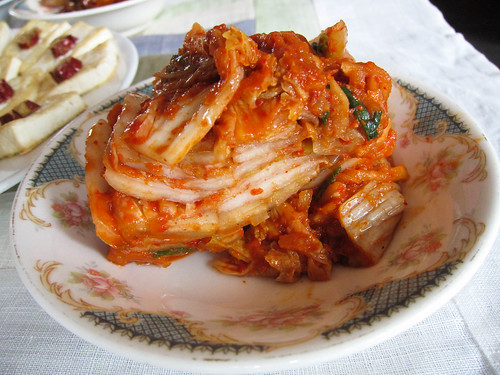
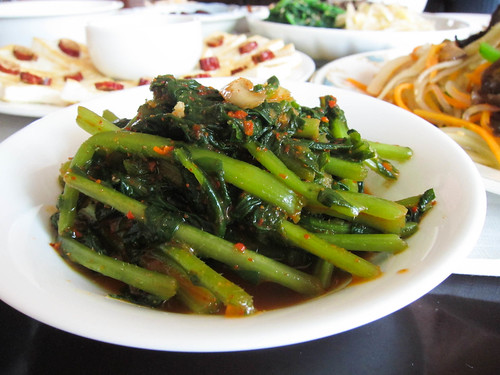
Various kimchi side dishes
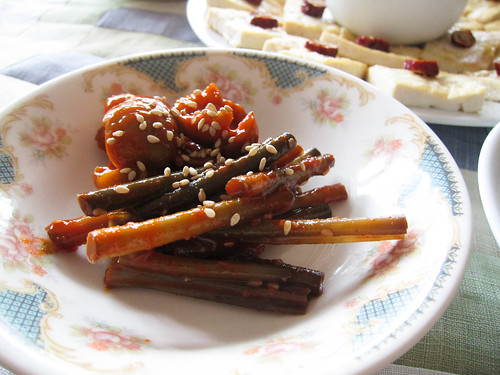
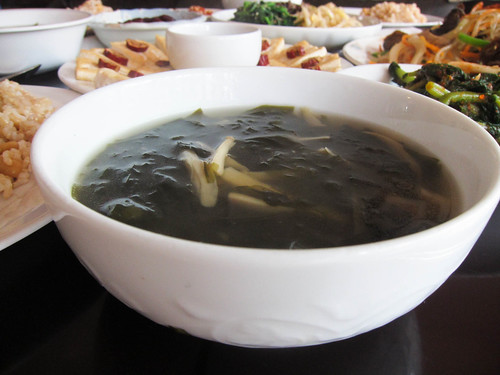
Miyuk guk (Korean sea vegetable soup) with enoki mushrooms.
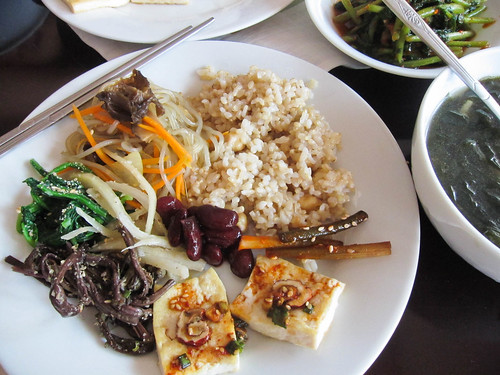
A little of everything on ma plate~
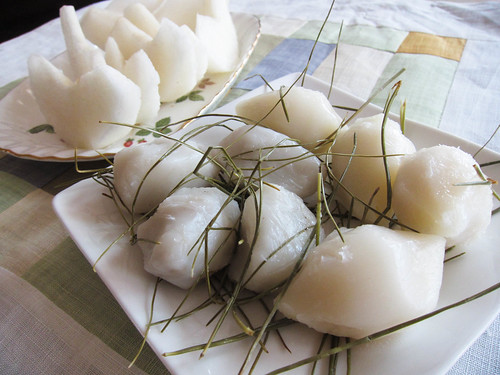
Finally, to cleanse the palate and make our Chuseok meal complete, a plate of juicy Korean pears and traditional Korean songpyeon (moon-shaped rice cake).
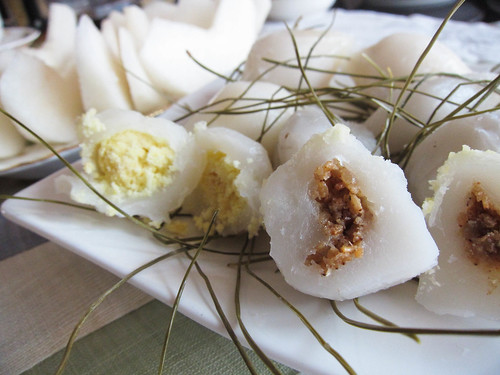
We got two types: one with sweet white bean filling, and another with sweetened sesame seeds. Chewy, sticky, yum.
So now that I've revealed my family's Chuseok meal, I plan on sharing as many recipes for these dishes as I can in the next few days. First, I'll highlight the recipes for our traditional tri-colored seasoned vegetables, called '삼색나물 ' in Korean.
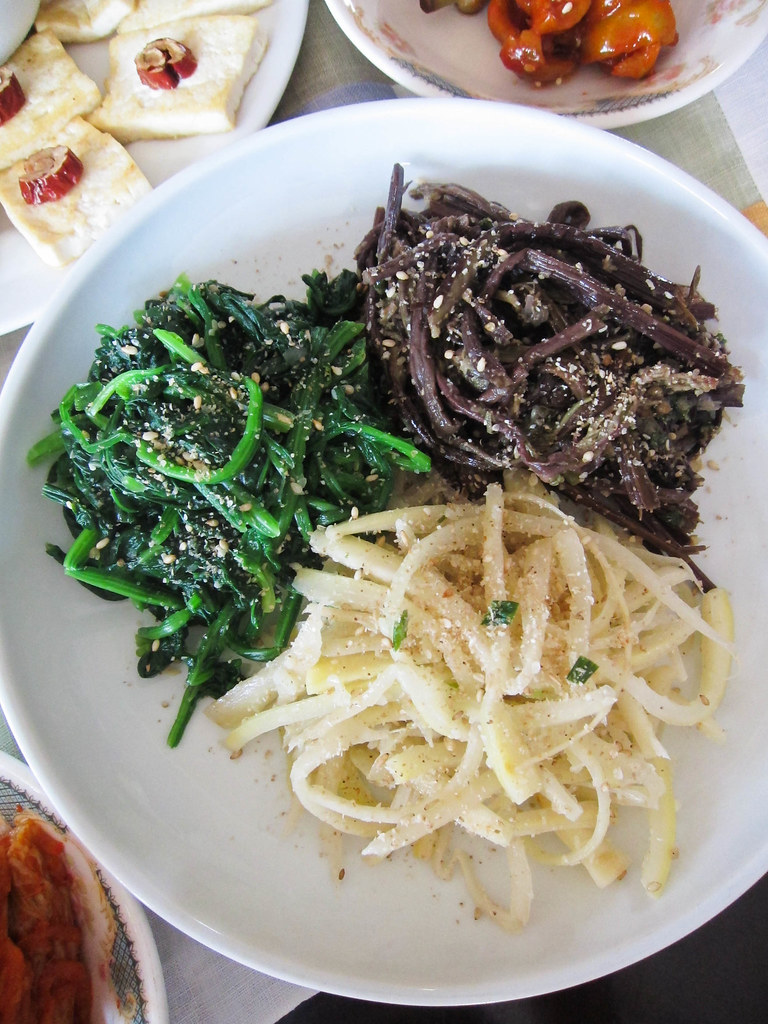
This trio of vegetables is a traditional Korean Chuseok dish, not only because they are so colorful, healthy, and delicious, but each vegetable symbolizes something different. The white doraji is a root vegetable (bellflower root) and therefore represents our ancestors and our origins. Next, the dark brown gosari namul (fernbrake or bracken fiddlehead) is the stem portion of the plant, and symbolizes parents (your own, or you if you are a parent yourself). Finally, the green spinach side dish represents the "leafy," fresh, vibrant youth, or the future generation. So there you have it, a little culture and Korean folklore, brought to you by Alien's Day Out. And my work here is done.
Oh wait. The recipes...
Three-color Seasoned Vegetables
The seasoning ingredients are pretty much the same and you can also play around with the amounts, according to your taste. Each recipe makes about 6 servings.
Gosari Namul (seasoned fernbrake)
- 300g of soaked and drained gosari
- 1 1/2 Tbs chopped spring onions
- 1 Tbs minced garlic
- 1 Tbs soy sauce
- 1 1/2 Tbs sesame seed oil
- 1/2 tsp salt
- 1 tsp toasted sesame seeds
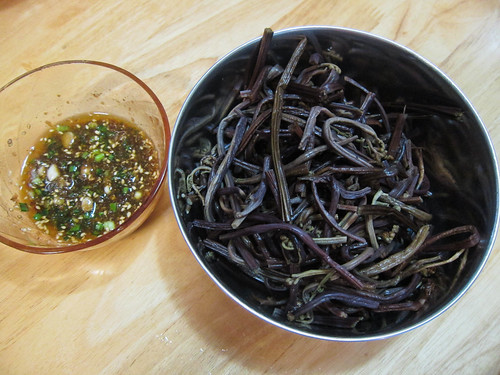
Assuming you have dried, packaged gosari, soak the dried stems in warm water for 3-4 hours beforehand. After that, in a large pot of water, boil the now-softened gosari for about 10 minutes. Remove from pot and drain. At this point, you can chop the stems into the length you desire. In a bowl, mix all the seasoning ingredients together, and then mix with the drained gosari stems.
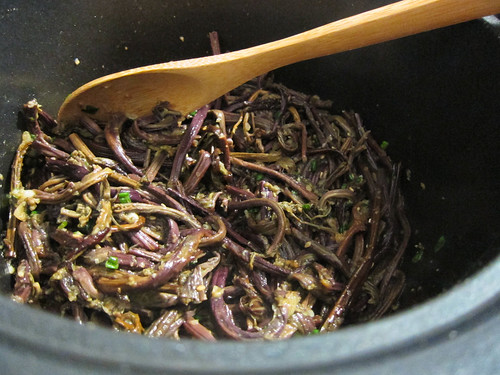
In a shallow pan, heat some vegetable oil (1 tsp) and cook the gosari for a few minutes until the seasoning is well-infused into the stems. Plate up and sprinkle some more toasted sesame seeds on top.
Doraji Namul (seasoned bellflower root)
- about 200g fresh doraji root
- 1 tsp chopped spring onions
- 1/2 tsp minced garlic
- 1/2 tsp salt, or to taste
- 1 tsp sesame seed oil
- 1 tsp toasted sesame seeds
- some extra veg oil for pan-frying
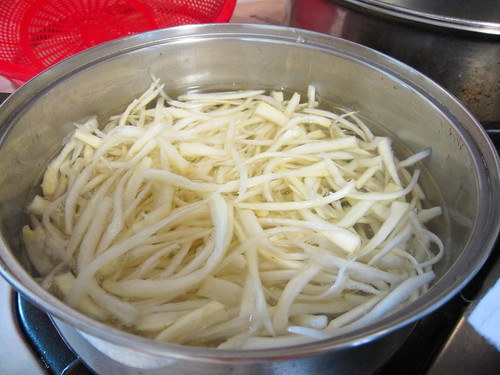
Peel, wash, and rinse the doraji root. Then slice into long, thin pieces. Mix with about 1/2 tsp of salt and leave for about 15-20 minutes to remove some of the bitter flavor. Next, rinse thoroughly in plenty of cold water. Bring a large pot of water to a boil and blanch the doraji roots, then remove from pot and drain. In a bowl, toss the doraji with the other ingredients, gently mixing and squeezing everything with your hands.
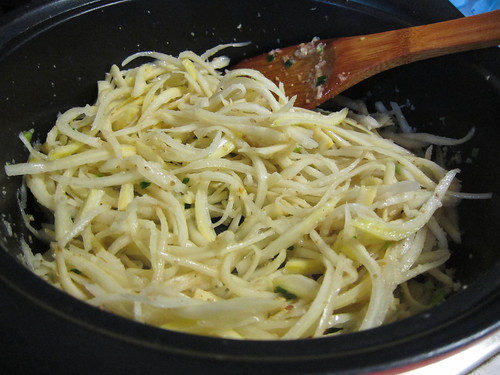
In a shallow pan, heat some vegetable oil and then add the seasoned roots to lightly pan-fry it, about 5 minutes.
Shigumchi Namul (seasoned spinach)
- 200g spinach (about 1 large bunch)
- 1 Tbs chopped spring onions
- 1/2 Tbs minced garlic
- 1/2 tsp salt, or to taste
- 2 tsp sesame seed oil
- 2 tsp toasted sesame seeds
Wash and rinse the spinach well to get rid of any dirt. Bring a large pot of water to a boil with a bit of salt, and then add the spinach leaves for about 2 minutes, just until the greens are wilted but not mushy- you do not want the spinach to start breaking down and dissolving. Drain everything into a colander and rinse with cold water to preserve the bright green color and prevent further cooking. Next, gently squeeze the water out of the spinach with your hands. If your spinach stems are too long, you can chop them into slightly more manageable pieces.
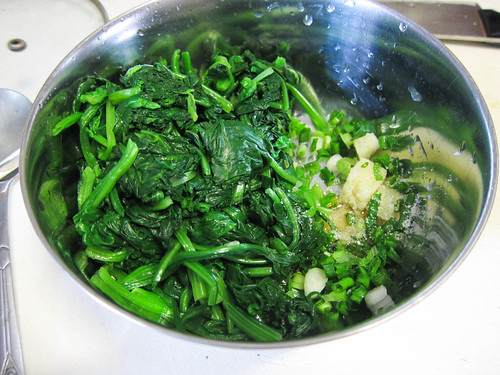
Place the spinach in a mixing bowl and add the rest of your ingredients.
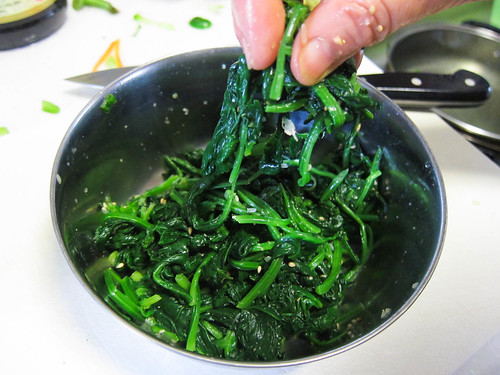
As Koreans say, mix with you hands for better, more authentic flavor. Plate up and garnish with some more sesame seeds on top.
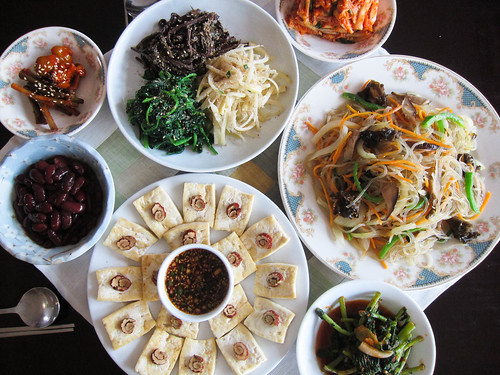
Happy Chuseok!